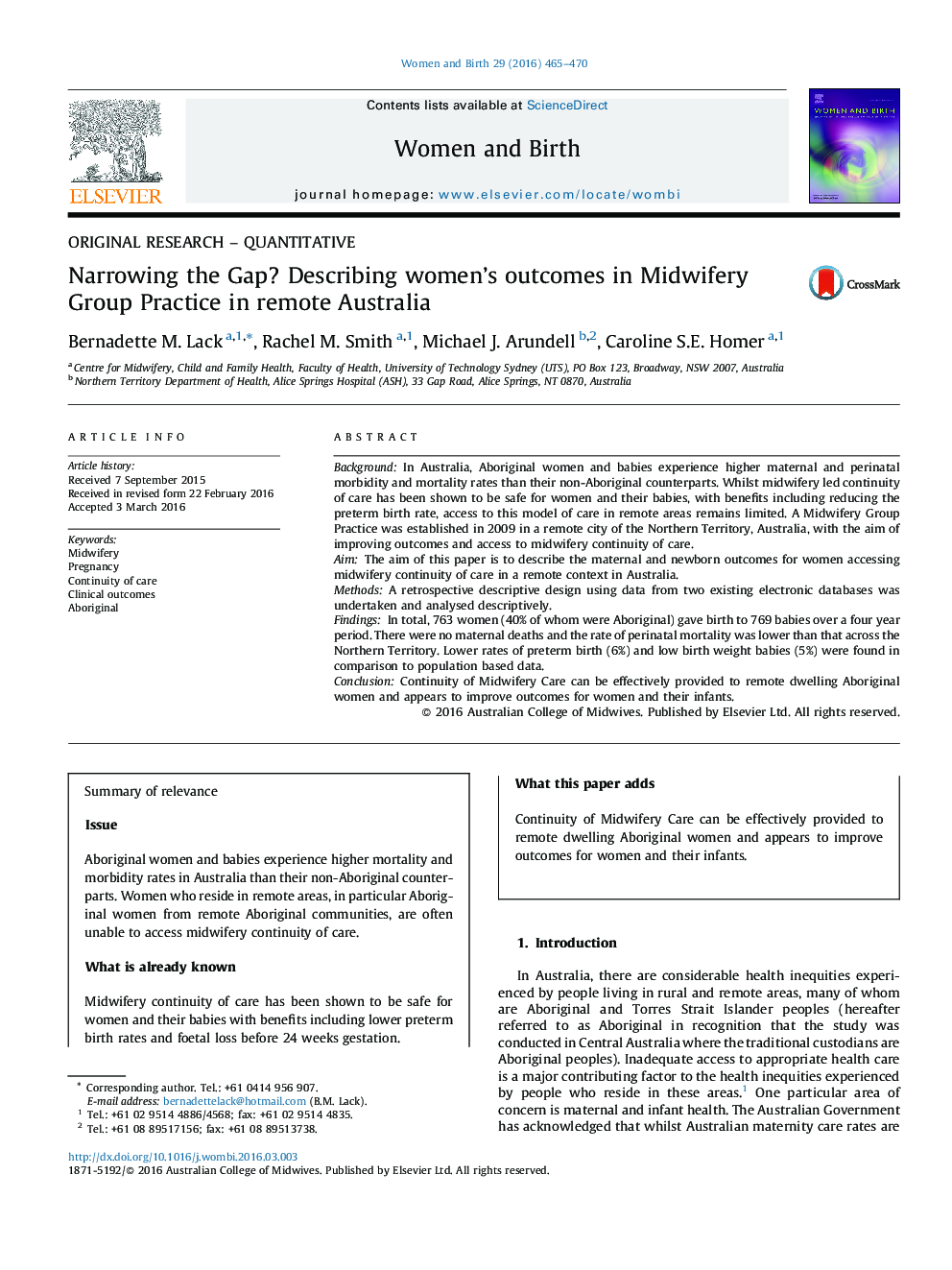| Article ID | Journal | Published Year | Pages | File Type |
|---|---|---|---|---|
| 5566088 | Women and Birth | 2016 | 6 Pages |
BackgroundIn Australia, Aboriginal women and babies experience higher maternal and perinatal morbidity and mortality rates than their non-Aboriginal counterparts. Whilst midwifery led continuity of care has been shown to be safe for women and their babies, with benefits including reducing the preterm birth rate, access to this model of care in remote areas remains limited. A Midwifery Group Practice was established in 2009 in a remote city of the Northern Territory, Australia, with the aim of improving outcomes and access to midwifery continuity of care.AimThe aim of this paper is to describe the maternal and newborn outcomes for women accessing midwifery continuity of care in a remote context in Australia.MethodsA retrospective descriptive design using data from two existing electronic databases was undertaken and analysed descriptively.FindingsIn total, 763 women (40% of whom were Aboriginal) gave birth to 769 babies over a four year period. There were no maternal deaths and the rate of perinatal mortality was lower than that across the Northern Territory. Lower rates of preterm birth (6%) and low birth weight babies (5%) were found in comparison to population based data.ConclusionContinuity of Midwifery Care can be effectively provided to remote dwelling Aboriginal women and appears to improve outcomes for women and their infants.
